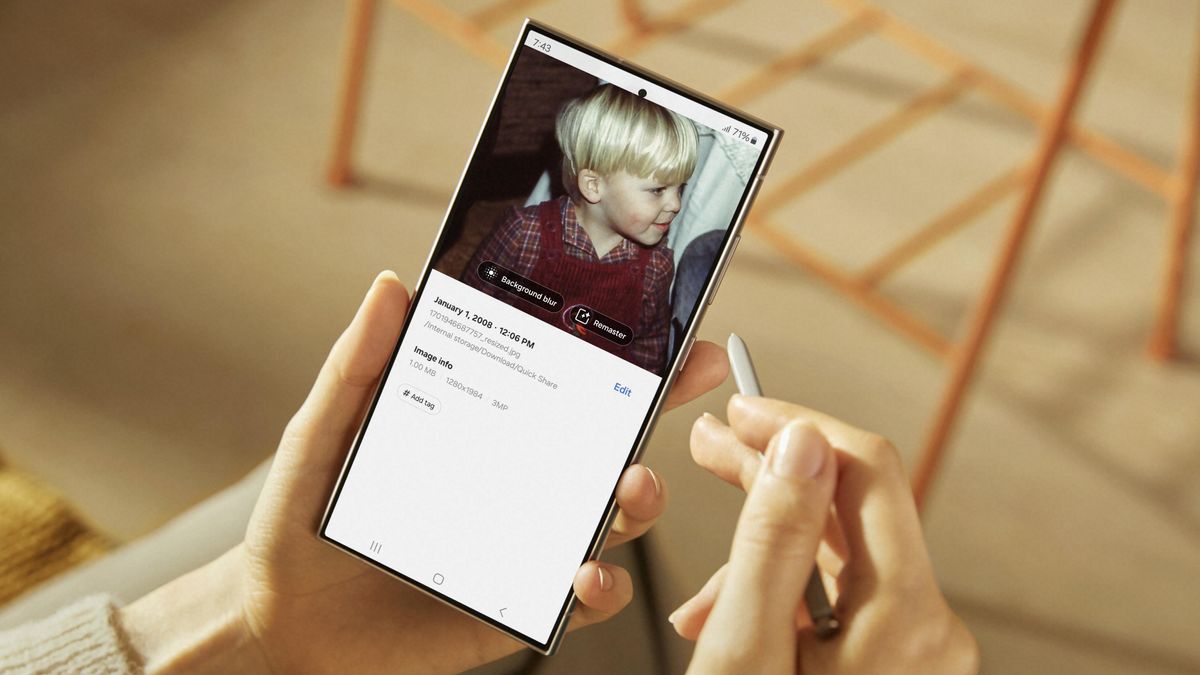Like most technology conferences in recent months, Samsung’s latest Galaxy Unpacked event was dominated by conversations surrounding AI. From two-way call translation to gesture-based search, the Samsung Galaxy S24 launched with several AI-powered tricks up its sleeve – but one particular feature is already raising eyebrows.
Set to debut on the Galaxy S24 and its siblings, Generative Edit will allow users to artificially erase, recompose and remaster parts of an image in a bid to achieve photographic perfection. This isn’t a new concept, and any edits made using this generative AI tech will result in a watermark and metadata changes. But the seamlessness with which the Galaxy S24 enables such edits has understandably left some Unpacked-goers concerned.
Samsung, however, is confident that its new Generative Edit feature is ethical, desirable and even necessary in today’s misinformation-filled world. In a revealing interview with TechRadar, Samsung’s Head of Customer Experience, Patrick Chomet, defended the company’s position on AI and its implications.
“There was a very nice video by Marques Brownlee last year on the moon picture,” Chomet told us. “Everyone was like, ‘Is it fake? Is it not fake?’ There was a debate around what constitutes a real picture. And actually, there is no such thing as a real picture. As soon as you have sensors to capture something, you reproduce [what you’re seeing], and it doesn’t mean anything. There is no real picture. You can try to define a real picture by saying, ‘I took that picture’, but if you used AI to optimize the zoom, the autofocus, the scene – is it real? Or is it all filters? There is no real picture, full stop.”
“But still, questions around authenticity are very important,” Chomet continued, “and we [Samsung] go about this by recognizing two consumer needs; two different customer intentions. Neither of them are new, but generative AI will accelerate one of them.
“One intention is wanting to capture the moment – wanting to take a picture that’s as accurate and complete as possible. To do that, we use a lot of AI filtering, modification and optimization to erase shadows, reflections and so on. But we are true to the user’s intention, which was to capture that moment.
“Then there is another intention, which is wanting to make something. When people go on Instagram, they add a bunch of funky black and white stuff – they create a new reality. Their intention isn’t to recreate reality, it’s to make something new. So [Generative Edit] isn’t a totally new idea. Generative AI tools will accelerate that intention exponentially in the next few years […] so there is a big customer need to distinguish between the real and the new. That’s why our Generative Edit feature adds a watermark and edits the metadata, and we’re working with regulatory bodies to ensure people understand the difference.”
On the subject of AI regulation, Chomet said that Samsung “is very aligned with European regulations on AI,” noting that governments are right to express early concerns around the potential implications of widespread AI use.
“The industry needs to be responsible and it needs to be regulated,” added Chomet, noting that Samsung is actively working on that. “Our new technology is amazing and powerful – but like anything, it can be used in good and bad ways. So, it’s appropriate to think deeply about the bad ways.”
As for how Generative Edit will end up being used on Samsung’s new Galaxy phones, only time will tell. Perhaps the feature will simply help average smartphone users (i.e. those unfamiliar with Photoshop) get the photos they really want, rather than facilitate mass photo fakery. Indeed, it still remains to be seen whether generative AI tech as a whole will be a benefit or a hindrance to society as we know it.
For our own early thoughts on Generative Edit and Samsung’s latest devices, head over to our hands-on Samsung Galaxy S24 review, hands-on Samsung Galaxy S24 Plus review and hands-on Samsung Galaxy S24 Ultra review.





